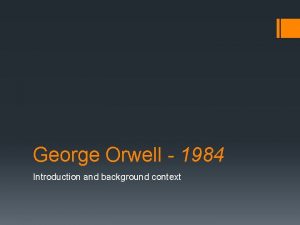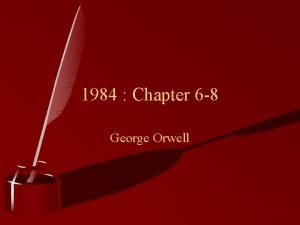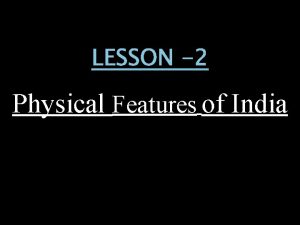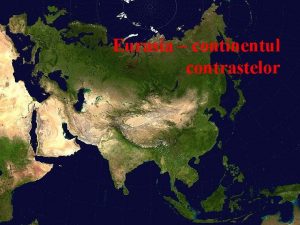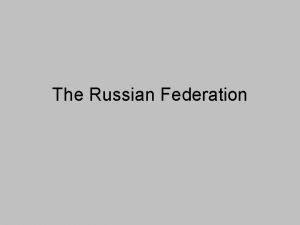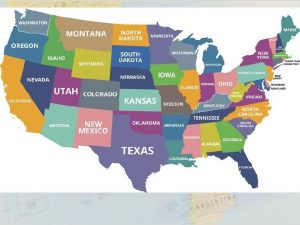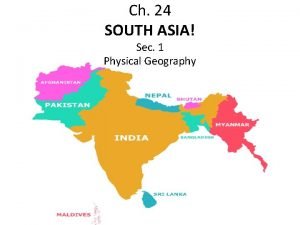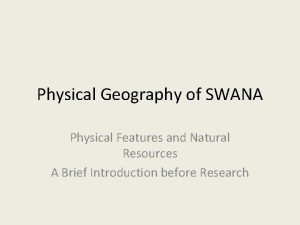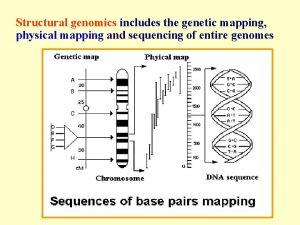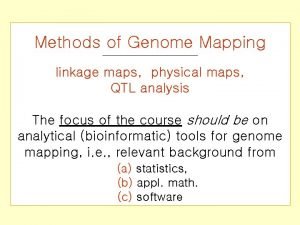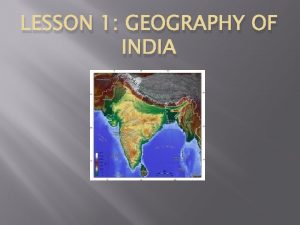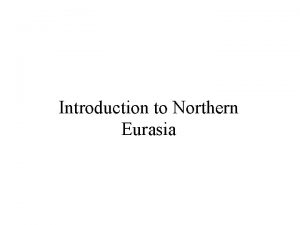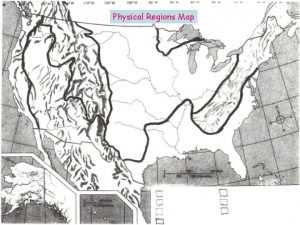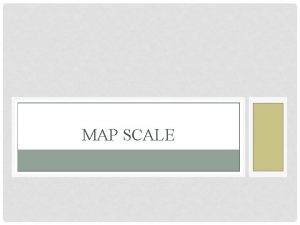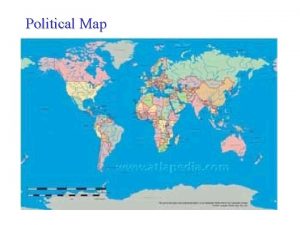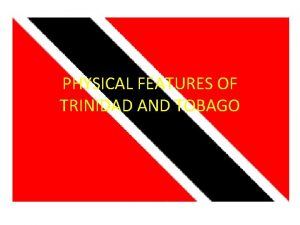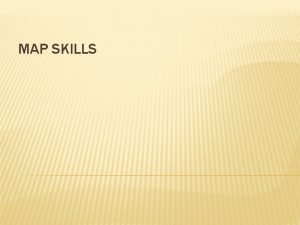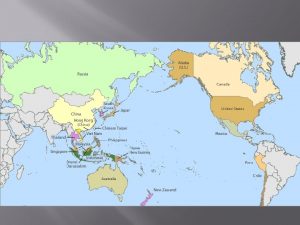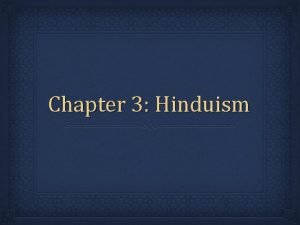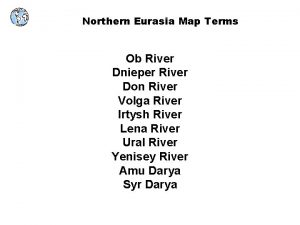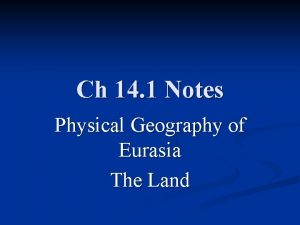World Map Physical Features The World Eurasia India




























![Raga (cont’d) • SA = home (Vadi = “King”) [drone] • MA (4 th) Raga (cont’d) • SA = home (Vadi = “King”) [drone] • MA (4 th)](https://slidetodoc.com/presentation_image_h2/5218d89a26b3bcce81800656d6195e31/image-29.jpg)

















- Slides: 46

World Map (Physical Features)

The World

Eurasia

India

Sitar (Northern India)

Sitar (playing position)

Sitar (close-up of frets)

Sitar (multiple views)

Vina (or Veena) (Southern India)

Vina (playing position)

Tabla (North Indian)

Tabla (playing position)

Mridangam (South Indian)

Mridangam (playing position)

Pakhavaj (North Indian)

Sarod (North Indian)

Sarod

Sarod (playing position)

Tampura/Tanpura/Tambura

Tampura (playing position)

Santoor

Bansuri

Indian Classical Performance • Improvisation (not pre-composed) • Pitch – based on Raga (scales, but more) • Rhythm – based on Tala (meters, but more) • Process of “unfolding” the Raga - movement from low to high - rhythmic movement from slow to fast

Roles of the Performers • Veena (south) or Sitar (north) – leader/soloist • Tambura – drone (primary pitches) • Tabla (north) or Mridangam (south) – rhythm and secondary soloist • Other secondary soloists (Sarod, etc. ) may be added

Organization of the Improvisation • Alap – opening section, free rhythm (no drums), establishes the Raga • Jor (Jod) – drums enter, regular rhythm (Tala) established • Jahla – fast, virtuosic concluding section • Gat – fixed (pre-composed) tune featured in last section

Two Classical Improvisations • You. Tube - Ravi Shankar on the Dick Cavett Show (4: 46) • You. Tube - Ustad Shahid Parvez (6: 03)

Pitch • • • Emphasis on the melodic (single notes in time) Asthagi – emphasis on “home” Antara – moving upward Abhog – “home” again Octave divides into 22 steps (West uses 12)

RAGA • Like a (western) scale, but…. MORE • Not just pitch, but HOW one moves through them • May include specific melodic patterns • May ascend and descend in different ways • Usually 5 -7 notes, ordered hierarchically
![Raga contd SA home Vadi King drone MA 4 th Raga (cont’d) • SA = home (Vadi = “King”) [drone] • MA (4 th)](https://slidetodoc.com/presentation_image_h2/5218d89a26b3bcce81800656d6195e31/image-29.jpg)
Raga (cont’d) • SA = home (Vadi = “King”) [drone] • MA (4 th) or PA (5 th) = second level (Samvadi = “Minister”)[drone] • Anuvadi Svaras = third level (“Servants” – define the raga) • Vivadi svaras = foreign notes (“Enemies” – not to be used)

Classification of Ragas • • Over 120, 000 ragas (claimed) Better described as a few hundred families Most performers know only a few dozen Associated and controlled by externals - season of year - time of day - mood evoked

Some Classical Improvisations • You. Tube - Ustad Amjad Ali Khan Vol 2 - Live At Pune (47: 02) – Sarod • You. Tube - Live at Pune - Pt Shiv Kumar Sharma and Ustad Zakir Hussein (1: 00) Santur

RHYTHM • Based on Rhythmic cycles (similar to Meter…but much MORE) • Division of time by regular beats (MATRA) • 1 st beat of cycle [most important] (SAM) • One group of beats [measure] (VIBHAG), [not all cycles of equal weight] • Complete cycle (AVARTAN) • Each cycle a unique pattern (TAL or TALA)

SOME DIFFERENT TALA • • Teental = 16 (4 + 4 + 4) [most common] Adachautal = 14 (2+4+4+4) Adi Tal = 8 (4+2+2) Dadra tal = 6 (3 + 3) Ektal = 12 (2+2+2+2) Jhaptal = 10 (2+3+2+3) Rupak Tal = 7 (3+2+2) Sultal = 10 (2+3+2+3)

COUNTING TALA • • • Not all Matra (beats) are equal 1 st beat of cycle [most important] (SAM) Not all Vibhag (measures) are equal Tali (clap) = strong beginning to Vibhag Khali (wave) = weak beginning to Vibhag Remainder of Matra in Vibhag counted on fingers (begin w/ little finger)

COUNTING TEENTAL • CLAP 2 3 4 • WAVE 2 3 4 • CLAP 2 3 4

COUNTING ADI TAL • CLAP 2 3 4 • WAVE 2

COUNTING DADRA TAL • CLAP 2 3 • WAVE 2 3

COUNTING JHAPTAL • CLAP 2 3 • WAVE 2 • CLAP 2 3

COUNTING RUPAK TAL • WAVE 2 3 • CLAP 2

Tabla (playing position)

TABLA “Tabla” (“on the right”) “Duggi” (“on the left”)

Modern Tabla (“bolt tuned”) List price: $ 418 (on sale: $ 313 plus S&H)

Learning & Playing Tabla • Taught by rote (no written music used) • Variety of strokes - area of drum head struck - finger(s) used - manner of stroke • Taught Mnenomically with “Bols” • Ex. : Dha, Din, Ga, Ta, Na, Ti, Ka, Tin, Tu, etc. • You. Tube video

Web & Video Examples of Tala • Website: Basic Technique of Tabla • You. Tube - Zakir Hussain lecture and demonstration of tabla • You. Tube - 1. Tabla Basics - Basic sound 'Na‘ • You. Tube - 2. Tabla Basics - Basic sound 'Tha‘ • You. Tube - 3. Tabla Basics - Basic sound 'Thun' • You. Tube - 4. Tabla Basics - Basic sound 'Thi' • You. Tube - 5. Tabla Basics - Basic sound 'ghe' • You. Tube - Ustad Zakir Hussain -- Vintage Teental Solo

David Courtney Videos • You. Tube - Introduction to the Tabla - Part 1 Bol and Gharana (skip to about 1: 25 to begin) • You. Tube - Introduction to the Tabla - Part 2 Parts and Tuning • You. Tube - Introduction to the Tabla - Part 3 Sitting & Hand Position

Learning Music in India • Master / pupil (one-to-one relationship) • Emphasis on Rote learning / perfection of technique • Master (North = Ustad) • Master (South = Guru) • You. Tube - George Harrison's sitar-lesson with Ravi Shankar • Reflects history of India
 Afro eurasia map
Afro eurasia map 1984 map orwell
1984 map orwell Eurasia 1984 map
Eurasia 1984 map The highest peak in the eastern ghats is
The highest peak in the eastern ghats is Physical features of india introduction
Physical features of india introduction Pen ciukotsk
Pen ciukotsk Cambulac
Cambulac Eurasia time zone
Eurasia time zone The mongol empire spans eurasia
The mongol empire spans eurasia The mongol empire spans eurasia answer key
The mongol empire spans eurasia answer key Innovative university of eurasia
Innovative university of eurasia Eurásia
Eurásia Guerra fria
Guerra fria Physical features map of south asia
Physical features map of south asia North africa physical geography
North africa physical geography Latin america physical features
Latin america physical features Topographic map of bangladesh
Topographic map of bangladesh Southern and eastern asia physical features
Southern and eastern asia physical features Latin america political and physical map
Latin america political and physical map Tear
Tear Where was it taken
Where was it taken Canada major physical features
Canada major physical features Southern and eastern asia physical features map answer key
Southern and eastern asia physical features map answer key Genetic map vs physical map
Genetic map vs physical map Genetic map vs physical map
Genetic map vs physical map Ottoman empire in world map
Ottoman empire in world map Map indian subcontinent
Map indian subcontinent Rhyming scheme of an elementary school classroom in a slum
Rhyming scheme of an elementary school classroom in a slum Hình ảnh bộ gõ cơ thể búng tay
Hình ảnh bộ gõ cơ thể búng tay Slidetodoc
Slidetodoc Bổ thể
Bổ thể Tỉ lệ cơ thể trẻ em
Tỉ lệ cơ thể trẻ em Gấu đi như thế nào
Gấu đi như thế nào Tư thế worms-breton
Tư thế worms-breton Chúa yêu trần thế
Chúa yêu trần thế Môn thể thao bắt đầu bằng từ đua
Môn thể thao bắt đầu bằng từ đua Thế nào là hệ số cao nhất
Thế nào là hệ số cao nhất Các châu lục và đại dương trên thế giới
Các châu lục và đại dương trên thế giới Cong thức tính động năng
Cong thức tính động năng Trời xanh đây là của chúng ta thể thơ
Trời xanh đây là của chúng ta thể thơ Cách giải mật thư tọa độ
Cách giải mật thư tọa độ Làm thế nào để 102-1=99
Làm thế nào để 102-1=99 Phản ứng thế ankan
Phản ứng thế ankan Các châu lục và đại dương trên thế giới
Các châu lục và đại dương trên thế giới Thơ thất ngôn tứ tuyệt đường luật
Thơ thất ngôn tứ tuyệt đường luật Quá trình desamine hóa có thể tạo ra
Quá trình desamine hóa có thể tạo ra Một số thể thơ truyền thống
Một số thể thơ truyền thống

